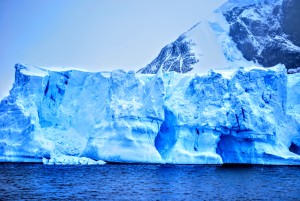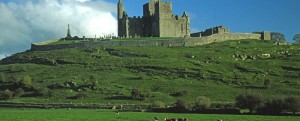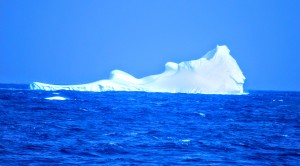An iceberg is born as a roar, as a huge chunk of ice splits from a glacier and plunges into the sea.
But the iceberg’s story is far from over — these drifting islands of ice have much to tell us about our planet. An iceberg — which takes its name from the Dutch ijsberg — or mountain of ice — may lead a surprisingly long and rich life.
Depending on conditions like their size, water and air temperatures, icebergs may survive for days or even years. Eventually they break up and melt — often far from where they originated. Icebergs, in fact, can drift six miles a day or more.
Icebergs are found where glaciers — rivers of ice that flow slowly from mountaintop to sea — predominate: most commonly off the coasts of Antarctica, Greenland, Canada, and Alaska. When they reach the sea, glaciers “calve” icebergs in one of nature’s rawest displays of power.
On our recent cruise to Antarctica aboard Hapag-Lloyd’s five-star expedition ship Hanseatic, my wife Catharine and I witnessed icebergs that were as tall as three-story buildings and as wide as several city blocks. Some resembled enormous tables floating atop the sea.
But icebergs can be even bigger: some giants have been almost as tall as the Washington Monument, as long and wide as Jamaica, and filled with enough fresh water to quench the thirst of everyone on earth for four years.
Frozen Time Capsules
Oceanographers are discovering that icebergs are complex creatures that may play a significant role in the life of the world’s oceans. One reason is their pedigree: icebergs come from glaciers formed by layers of snow compacted over thousands of years.

An iceberg that appears blue is older and has fewer air bubbles than a white iceberg. Photo by Catharine Norton
Like time capsules, they permit scientists to investigate the planet’s distant past — and perhaps predict its future. One oceanographer calls them “hotspots of chemical and biological activity.”
For instance, icebergs may contain millennia-old dust and volcanic ash. As they melt, nutrients such as iron slough off into the ocean and nourish seabirds, krill, and plants. They may also play a role in absorbing carbon dioxide from the atmosphere, much like trees in the rain forest.
Because sea water circulates among all the world’s oceans, their beneficial effects can be widespread.
What It Takes to be an Iceberg
To officially qualify as an iceberg, a chunk of glacial or shelf ice must be at least 16 feet high and 50 feet long. Smaller chunks — from three to 13 feet tall and and 16 to 49 feet long — are known as “bergy bits.” Anything smaller is a “growler.”
But don’t be fooled by size. Growlers are the most treacherous to mariners because they’re harder to detect.
Like snowflakes, no two icebergs are alike — and they come in a fantastic variety of shapes, which change frequently as icebergs drift.
Some sport jagged pinnacles and spires. Others — like most of those in Antarctica — are flat-topped (either block-shaped or elongated). Still others are domed, wedge-shaped, or U-shaped.
Icebergs often appear almost blindingly white as they shimmer in the sunshine, primarily due to air bubbles in the ice. But where there are no bubbles — as is the case with older icebergs — you may also see them streaked with blue, or appear to be solid blue as reflected in the sun.
Long after calving, icebergs continue to make noise. If they melt asymmetrically and tip over, you’ll be startled by the crash — and possibly feel the waves from the impact. If you hear the fizzing of “bergy seltzer,” you’ll know that air bubbles are popping. And then there’s the crackling percussion of an iceberg calving in the water.
Scientists still have much to learn about the role these frozen behemoths play in ocean ecology.
Keep in mind that only about one-eighth of an iceberg is visible above the water line. And what we know about icebergs is, quite literally, just the “tip of the iceberg.”
Note: My thanks go to the scientists and expert lecturers aboard the Hanseatic for providing some of the background for this post.

Cashel Rock in County Tipperary, Ireland, where St. Patrick did missionary work. Photo by Dennis Cox/WorldViews
Meanwhile, Happy St. Patrick’s Day! To read about the “real St. Patrick,” see my post on Ireland’s patron saint which ran a year ago at this time.
You can also check out the Ireland destination page at StrideTravel.com, the website to consult when you’re looking for guided tours, unguided tours, and small-ship and river cruises worldwide.













Leave a Reply